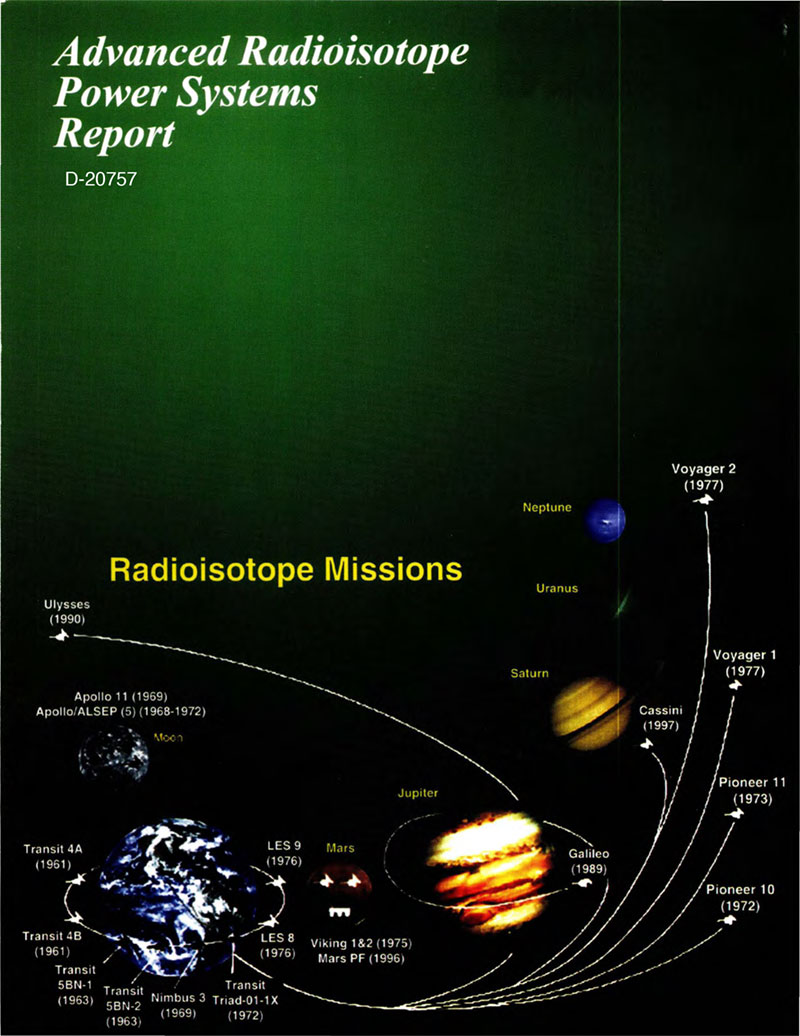Advanced Radioisotope Power Systems Report (March, 2001)

| Language |
|
|---|
Executive Summary
Recommendation
The assessment team recommends that the Advanced Stirling Engine Converter (ASEC), Alkali Metal Thermal to Electric Converter (AMTEC) and Segmented Thermoelectric (STE) technologies be funded with detailed technical progress reviews yearly to decide whether to continue or not. Future down selects should be based on demonstrated technical progress instead of projections.
There are uncertainties in the performance estimates of advanced radioisotope power systems (ARPS) conversion technologies, uncertainties in the future supply of Pu-238, and lack of detailed requirements of NASA missions beyond 2011 as to their sensitivity to mass, lifetime, electromagnetic interference (EMI), and vibration. Therefore, it is not appropriate at this time to downselect to one ARPS conversion technology that can fulfill the needs of most NASA deep space science and Mars missions beyond 2011.
The recommended ARPS technology roadmap (Figure ES-l) allows options to either develop Stirling l.0 or 1.1 to flight readiness on an accelerated schedule, or to develop Stirling 2.0 roughly in parallel with AMTEC and Segmented Thermoelectrics for missions that launch beyond about 2011. Technology readiness gates are provided for each technology.
A Formal Review Board would review each technology at these gates. The Board would recommend to continue the technology or not based on technical progress in meeting their requirements at the gates and the applicability to future NASA missions.
This document was prepared in late 2000. Some mission plans have changed since then. In early 2001, NASA's Office of Space Science and DOE's Office of Space and Defense Power Systems established an RPS Provisioning Strategy Team to recommend a strategy for provisioning of safe, reliable, and affordable RPSs to enable potential 2004-2011 space robotic missions. Some of the conclusions and recommendations of that team may differ from the recommendations of this report.
Introduction
NASA's Office of Space Science requested JPL to lead an assessment of advanced power source and energy storage technologies that could enable future (beyond 2006) NASA Space Science missions, and prepare technology road maps and investment strategies. The power source technologies to be reviewed are advanced radioisotope power sources, solar cells, and fuel cells. The energy storage technologies are batteries, regenerative fuel cells and flywheels. This summary report is the result of reviewing the power requirements for future NASA science missions and providing a technical assessment of the radioisotope power conversion technologies being considered for these future NASA missions.
